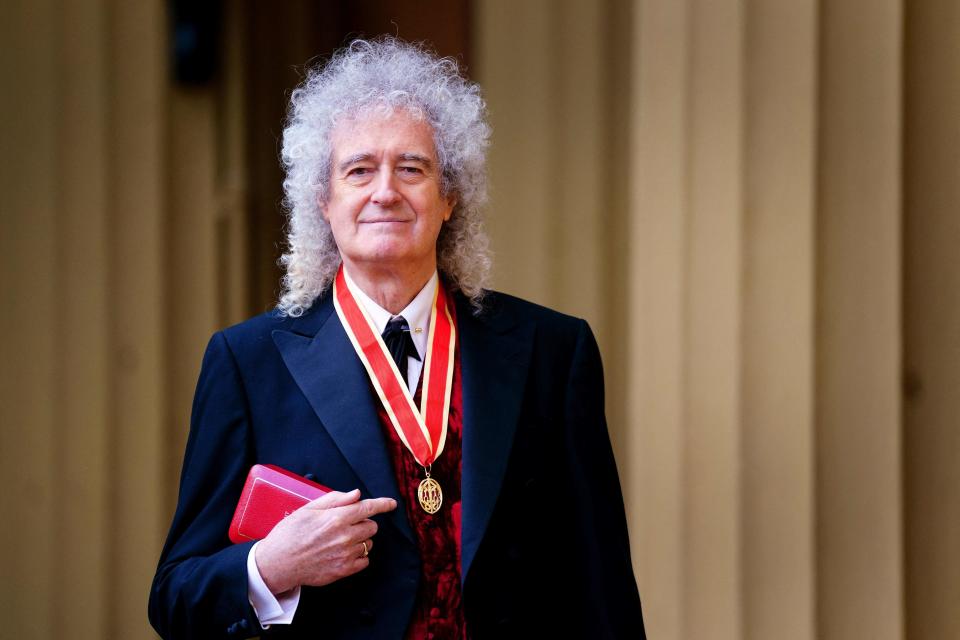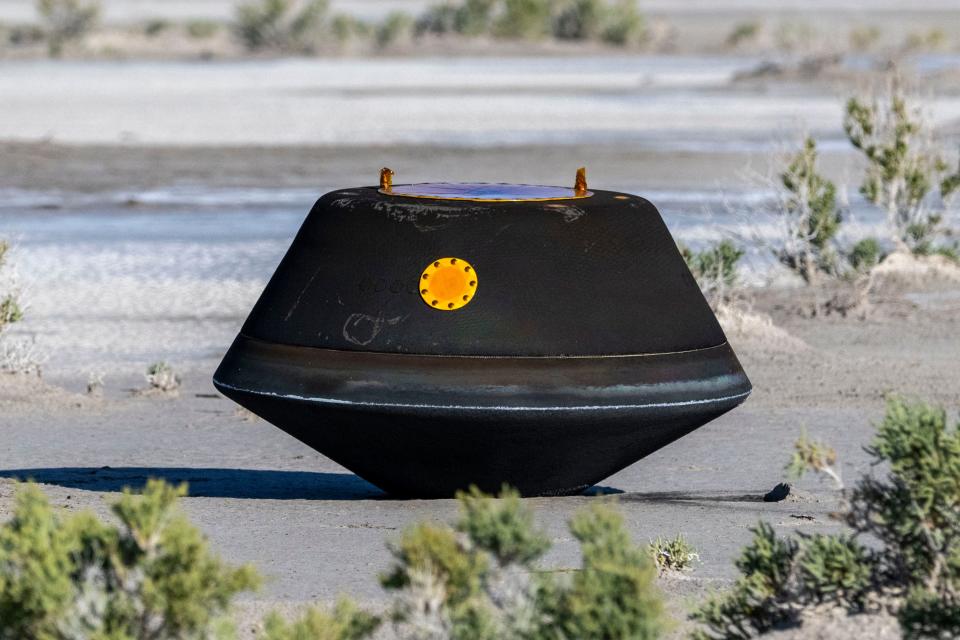Brian May, best known as Queen's guitarist, helped NASA return its 1st asteroid sample to Earth
When he's not rocking out on stage as a founding member of Queen, Brian May enjoys a healthy scientific interest in outer space.
But it's no mere hobby for the 76-year-old guitar legend to gaze upon the stars or research the nature of the universe. May, an accomplished scientist who has a doctorate in astrophysics, recently helped NASA return its first ever asteroid sample to Earth.
'What do you see?' NASA shares photos of 'ravioli'-shaped Saturn moon, sparking comparisons
The sample consisting of rocks and dust was obtained from the asteroid Bennu and arrived Sunday back in Earth's orbit. May was an integral part of the mission, creating stereoscopic images that allowed the mission's leader and team to find a safe landing spot on the asteroid, which has the potential to crash into Earth sometime in the future.
"This box when it is opened of material from the surface of Bennu can tell us untold secret of the origins of the universe, the origins or our planet and the origins of life itself," May said Monday in a statement on his website. "What an incredibly exciting day."

Record-setting space flight: NASA astronaut returns to Earth after American record 371 days in space
Brian May was rehearsing for Queen tour when sample reached Earth
The result is a culmination of a nearly two-decades-long mission that in 2016 saw the launch of the OSIRIS-REx spacecraft bound for Bennu.
The sample itself was collected in 2020, two years after the asteroid became the smallest object ever to be orbited by a spacecraft, according to NASA. The journey of spacecraft OSIRIS-REx (Origins, Spectral Interpretation, Resource Identification, Security, Regolith Explorer) back to Earth then commenced in May 2021.
In addition to developing the stereoscopic images, May — who was knighted in March — also co-wrote a book about the mission with team leader Dante Lauretta called "Bennu 3-D: Anatomy of an Asteroid."
Sadly for May, he couldn't be in person when NASA received the sample because Queen is preparing for a U.S. tour that begins next week in Baltimore. But the guitarist congratulated the crew Sunday in a clip aired on NASA TV.
"My heart stays with you as this precious sample is recovered,” he said.

UFOs: What to know about Netflix's new series, 'Encounters'
Why is the asteroid Bennu of scientific interest?
The sample from Bennu, which passes close to Earth about every six years, isn't just notable as the first American asteroid sample return in history.
It also offers scientists a window into the early solar system as it was first taking shape billions of years ago and flinging ingredients that could have even seeded life on Earth, NASA says.
The asteroid, which is more than 4.5 billion years old, is believed to have broken off from a much larger carbon-rich asteroid about 700 million to 2 billion years ago. Discovered in 1999, Bennu likely formed in the main asteroid belt between Mars and Jupiter before it drifted much closer to Earth.
Studying it should help researchers make discoveries to better understand planet formation and the events that led to the creation of life on Earth. Scientists also anticipate being able to learn more about potentially hazardous asteroids, according to NASA.
"Bennu is a potentially hazardous asteroid, and what we learn from the sample will help us better understand the types of asteroids that could come our way,” NASA Administrator Bill Nelson said in a statement.
NASA UFO report: How NASA hopes to shift UAP talks 'from sensationalism to science'

OSIRIS-REx dropped off a capsule containing the estimated 8.8-ounce sample Sunday morning and it harmlessly parachuted down to Earth, landing in Utah’s west desert near Salt Lake City where scientists were waiting for it.
It was then to be taken in its unopened canister to NASA’s Johnson Space Center in Houston on Monday. Once there, scientists planned to extract and weigh the sample, and create an inventory of the rocks and dust before preparing it for distribution in pieces to scientists worldwide.
OSIRIS-REx didn't land after dropping off the sample capsule in Utah, but instead departed on a new mission to study a different asteroid named Apophis that it's scheduled to reach in 2029, the space agency said.
Eric Lagatta covers breaking and trending news for USA TODAY. Reach him at [email protected]
This article originally appeared on USA TODAY: Queen guitarist Brian May helps NASA return asteroid sample to Earth
